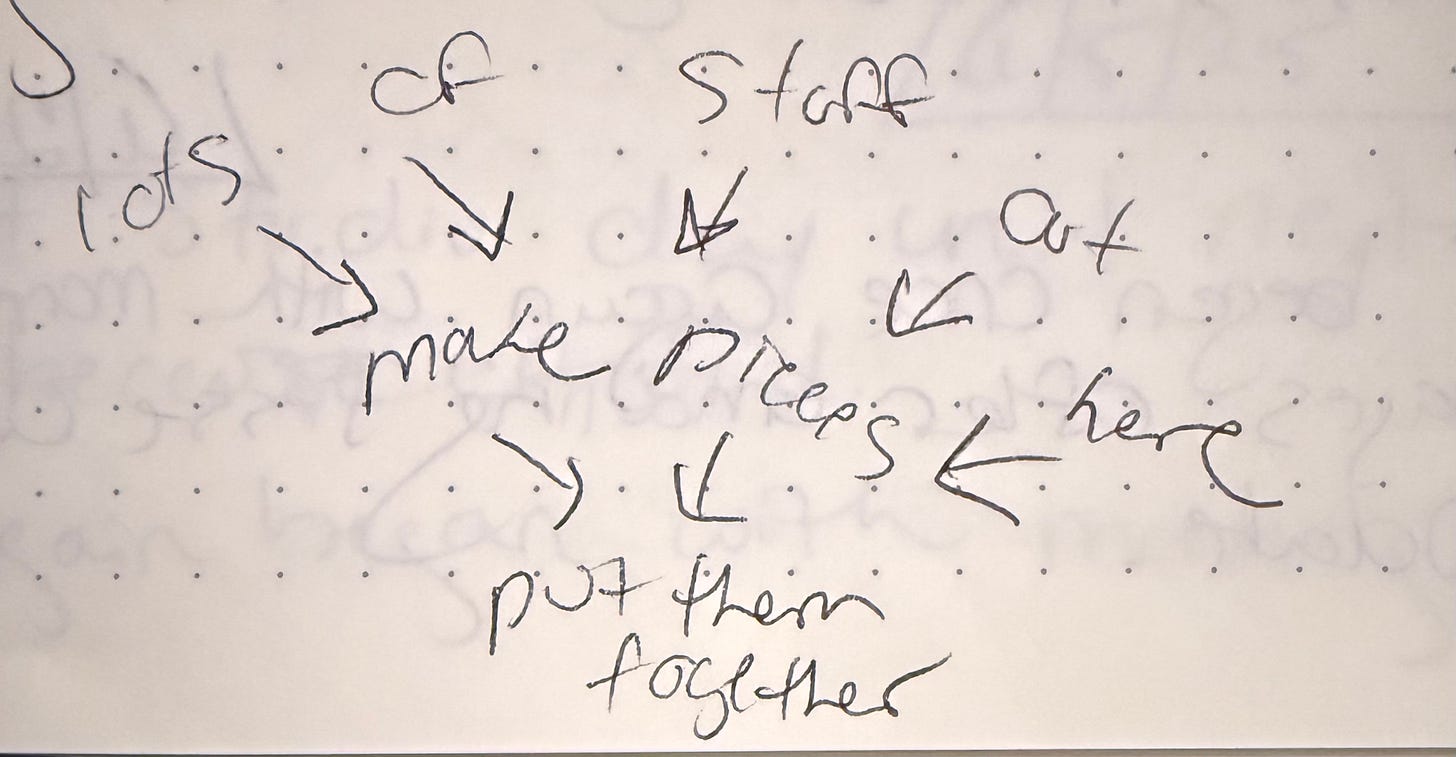Hello, hello. I am the museum’s current artist-in-residence. My name is Sarah Dahnke.
I have been an Arab American my entire life, yet this is my first time really being recognized for it as an artist.
As you can see, I don’t carry an Arab family name. I wasn’t raised around Arab people, culture or language. I was adopted and separated from the people and places from which I originate. As a result, I’ve always been Arab—when people ask the infuriating “where are you from?”, on forms where you have to check a box (there is never one for us, but I always check “other)— but I haven’t loudly claimed Arab-ness because I didn’t have anything to show for it besides my brown skin and curly hair. The number of times someone has tried to speak Arabic to me then grown frustrated when I cannot respond … it’s as if I’ve let down an entire village just by existing.
Reading through the archives of this substack, I see a common theme among my fellow Arab American artists who have come to the museum before me. There is a common feeling of fracture, of missing pieces big and small. Some are putting those pieces back together through their work or using their residency time to learn a little bit more about “how” to be Arab. I feel a kinship to each of these artists, having arrived in Dearborn with a secret mission to also learn what it means to be Arab. I will never regain what I lost, but the more I can witness Arab Americans in the diaspora living full and interesting and creative lives, the more I can let go of any idea that there is a “right” way to be an Arab American.
The project I am working on while in residence is a performance titled “Blood Memory.” It is rooted in ancestral memory and is an attempt to connect me back to, what my biological father refers to as, “the root.” I am using dance to understand what came before me, and the many generations of my ancestors who I am connected to by blood but not by familial relationship. I am acknowledging the fractures and the clouds of shame that have been carried and passed down to me by people I never met. I’m also attempting to celebrate the amalgamation of all of the stories the cells in my body hold.
I have a couple of weeks left at the museum and will be documenting pieces of my project on this Substack. Expect to see some dance research, some archival research, some pieces of videos I’ve created to accompany performance, and some music compositional experiments in progress. I’ve been engaged in all of the above as I piece together the different elements that will be woven together to make a final product.
There are many forms of artistic process. For me, I think of my process like a large circle. At the center of that circle is the thing I will actually show an audience. The perimeter is where I begin. I move around the perimeter, creating different pieces/studies. This helps me to understand what it is I am really making, what threads I want to follow and what I want to leave out. As I move closer and closer to the center, the final piece comes more into focus. A sketch from my notebook shows this like:
Maybe this makes sense to some of you, and maybe others are more linear in your thinking and assume we must first envision “I’m going to draw a house,” then we put pencil to paper and draw the house. But for me, process has been where I make the discovery of what it is I am metaphorically drawing. If I already had the answers to my questions, I wouldn’t need to create anything at all.
Being so disconnected from my Arab roots, I have not felt brave enough to make work that intersects with them for a long time. “Blood Memory” is one of two projects I began in the past year that really reflect my personal experience and unique story, and it feels like I have finally come home.





Thank you for this glimpse into your journey & creative practice.